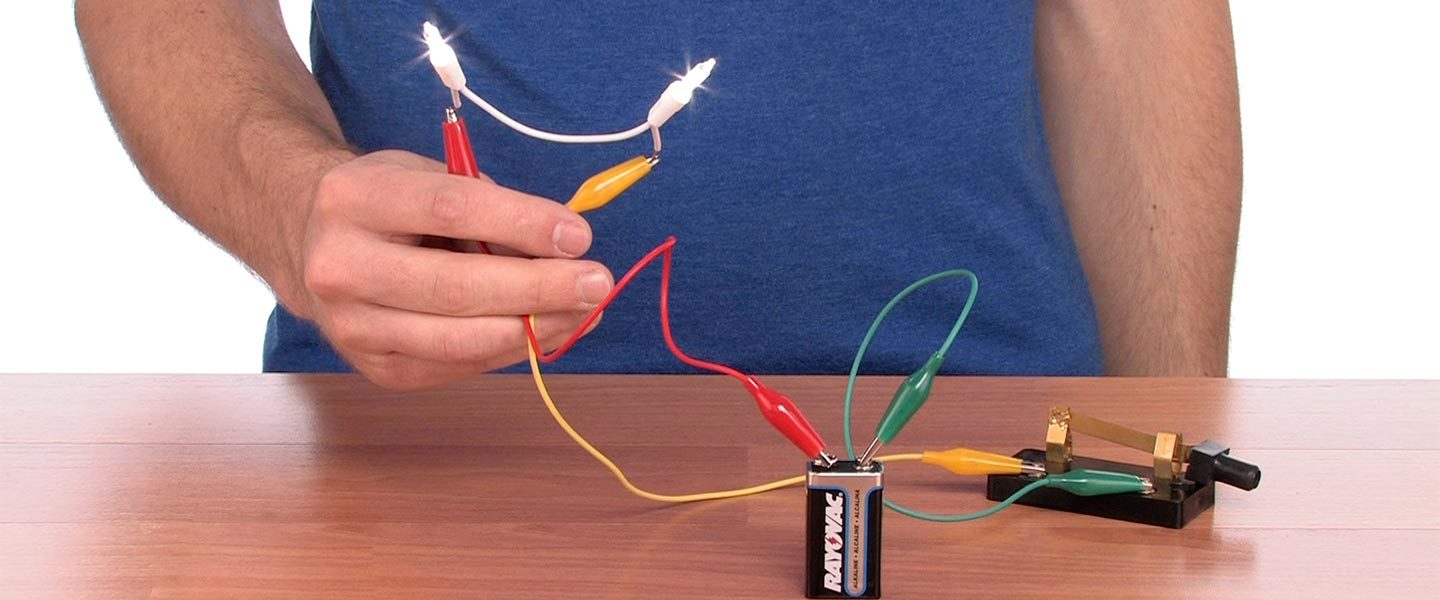
Electric circuits are fundamental to modern technology, powering everything from household appliances to advanced electronic devices. Understanding the principles of electric circuits is essential for anyone interested in technology, engineering, or science. In this article, we'll explore 19 fascinating facts about electric circuits, shedding light on their history, functionality, and impact on our daily lives. From the basics of circuit components to the intricacies of circuit design, we'll delve into the inner workings of these essential systems. Whether you're a student, a tech enthusiast, or simply curious about the world of electricity, these facts will illuminate the captivating realm of electric circuits. So, let's embark on a journey through the electrifying domain of circuits, uncovering intriguing details and gaining a deeper appreciation for the role they play in powering the modern world.
Key Takeaways:
- Electric circuits power our world, from everyday devices to groundbreaking innovations in technology, healthcare, and transportation. They enable the flow of electrical energy, shaping our modern era and driving progress.
- Electric circuits are versatile and essential, from simple household appliances to complex spacecraft systems. They embody the flow of electrons, follow fundamental laws, and pave the way for future technological marvels.
Electric Circuits: A Fascinating World of Power and Connectivity
Electric circuits are the backbone of modern technology, facilitating the flow of electrical energy to power a myriad of devices and systems. Here are 19 intriguing facts about electric circuits that shed light on their significance and functionality.
Electricity Powers Our World
Electricity is a fundamental aspect of our daily lives, driving everything from lighting and heating systems to electronic devices and industrial machinery. The widespread reliance on electricity underscores the critical role of electric circuits in enabling this essential resource to reach consumers and businesses.
Electric Circuits Enable Innovation
Innovations in electric circuits have revolutionized numerous industries, including telecommunications, healthcare, transportation, and entertainment. These advancements have led to the development of sophisticated electronic gadgets, life-saving medical equipment, efficient transportation systems, and immersive multimedia experiences.
Electric Circuits Embody Versatility
Electric circuits come in diverse forms, catering to a wide range of applications. From simple circuits powering household appliances to complex circuits fueling spacecraft and satellites, the adaptability of electric circuits is truly remarkable.
The Flow of Electrons
Electric circuits facilitate the flow of electrons, which are the carriers of electric charge. This movement of electrons within the circuit is essential for the transmission of electrical energy, enabling devices to function as intended.
Direct Current vs. Alternating Current
Electric circuits can be categorized into two primary types: direct current (DC) and alternating current (AC). DC circuits maintain a constant flow of electric charge in a single direction, while AC circuits alternate the direction of the electric current at regular intervals.
Ohm’s Law Governs Electric Circuits
Ohm’s Law, a fundamental principle in electrical engineering, establishes the relationship between voltage, current, and resistance in an electric circuit. This law serves as a cornerstone for analyzing and designing circuits, guiding engineers in optimizing their performance.
Series and Parallel Circuits
Electric circuits can be configured in series or parallel arrangements. Series circuits feature components connected end to end, creating a single pathway for current flow, while parallel circuits involve multiple pathways for current to travel, offering distinct advantages in different applications.
Circuit Components: Resistors, Capacitors, and Inductors
Resistors, capacitors, and inductors are essential components in electric circuits, each serving unique functions. Resistors regulate the flow of current, capacitors store electrical energy, and inductors generate magnetic fields, collectively contributing to the circuit’s operation.
Circuit Protection Devices Safeguard Against Overloads
Circuit protection devices such as fuses and circuit breakers play a crucial role in preventing damage from electrical overloads. These safety mechanisms interrupt the flow of current when abnormalities are detected, safeguarding both the circuit and connected devices.
Printed Circuit Boards: Foundations of Modern Electronics
Printed circuit boards (PCBs) provide a sturdy platform for mounting and interconnecting electronic components, forming the backbone of modern electronic devices. Their compact design and efficient layout enable the seamless integration of complex circuits into compact gadgets.
Integrated Circuits: The Powerhouses of Electronics
Integrated circuits, or microchips, condense intricate circuitry into compact semiconductor chips, driving the functionality of countless electronic devices. Their miniaturized form factor and exceptional performance have propelled the evolution of technology across various domains.
Electric Circuits in Renewable Energy Systems
Renewable energy systems, such as solar panels and wind turbines, rely on electric circuits to harness and distribute clean energy. These circuits enable the conversion of renewable sources into electricity, contributing to sustainable power generation.
Circuit Simulation Software Accelerates Design Processes
Circuit simulation software empowers engineers to model and analyze complex circuits, streamlining the design and testing phases. This virtual prototyping tool facilitates the identification of potential issues and the optimization of circuit performance before physical implementation.
Electric Circuits in Communication Networks
Communication networks, including the internet and telecommunications infrastructure, rely on intricate electric circuits to transmit data across vast distances. These circuits form the backbone of global connectivity, enabling seamless communication and information exchange.
Quantum Circuits: Pioneering Quantum Computing
Quantum circuits, a key component of quantum computers, manipulate quantum bits (qubits) to perform computational tasks with unprecedented speed and efficiency. These circuits hold immense potential for solving complex problems that surpass the capabilities of classical computers.
The Evolution of Electric Circuits
The evolution of electric circuits has been marked by groundbreaking innovations, from the advent of the telegraph and telephone to the emergence of modern computing systems and smart technologies. This progression continues to reshape industries and drive technological advancements.
Electric Circuits and IoT Integration
The integration of electric circuits with the Internet of Things (IoT) has led to the proliferation of smart devices and interconnected systems. These circuits form the underlying infrastructure for IoT applications, enabling seamless data exchange and automation in diverse environments.
Electric Circuits: Paving the Way for Future Innovations
As technology advances, electric circuits will continue to underpin transformative innovations, from advanced robotics and artificial intelligence to sustainable energy solutions and beyond. Their role in shaping the future of technology remains pivotal, driving progress and unlocking new possibilities.
Electric circuits form the intricate network that powers our modern world, from the devices we use daily to the monumental technological achievements that define our era. Understanding the nuances of electric circuits unveils the remarkable synergy between electrical engineering and technological innovation, showcasing their profound impact on society and the boundless potential they hold for the future.
Conclusion
Understanding the fundamentals of electric circuits is crucial in comprehending the technology that powers our modern world. From the basic components to complex applications, electric circuits form the backbone of countless devices and systems. By delving into the 19 fascinating facts about electric circuits, we've gained insight into their diverse applications, historical significance, and impact on daily life. As we continue to innovate and push the boundaries of technology, the role of electric circuits will only become more integral, shaping our future in ways we can scarcely imagine.
FAQs
What are the key components of an electric circuit?
An electric circuit comprises various essential components, including voltage sources (such as batteries), conductors (wires), resistors, capacitors, and inductors. These elements work together to facilitate the flow of electric current and enable the circuit to perform its intended function.
How do electric circuits contribute to everyday technology?
Electric circuits are the backbone of modern technology, powering an array of devices we rely on daily, from smartphones and computers to household appliances and transportation systems. Their versatility and ubiquity make them indispensable in our interconnected world.
Electric circuits captivate engineers and enthusiasts alike, but understanding their intricacies requires mastering fundamental principles. Kirchhoff's laws, which govern voltage and current relationships in circuits, provide a solid foundation for analyzing complex electrical systems. Inductance, another crucial concept, introduces fascinating behaviors and enables innovative applications in various domains. Exploring these topics further will deepen your understanding of electric circuits and their role in shaping our modern world.
Was this page helpful?
Our commitment to delivering trustworthy and engaging content is at the heart of what we do. Each fact on our site is contributed by real users like you, bringing a wealth of diverse insights and information. To ensure the highest standards of accuracy and reliability, our dedicated editors meticulously review each submission. This process guarantees that the facts we share are not only fascinating but also credible. Trust in our commitment to quality and authenticity as you explore and learn with us.


